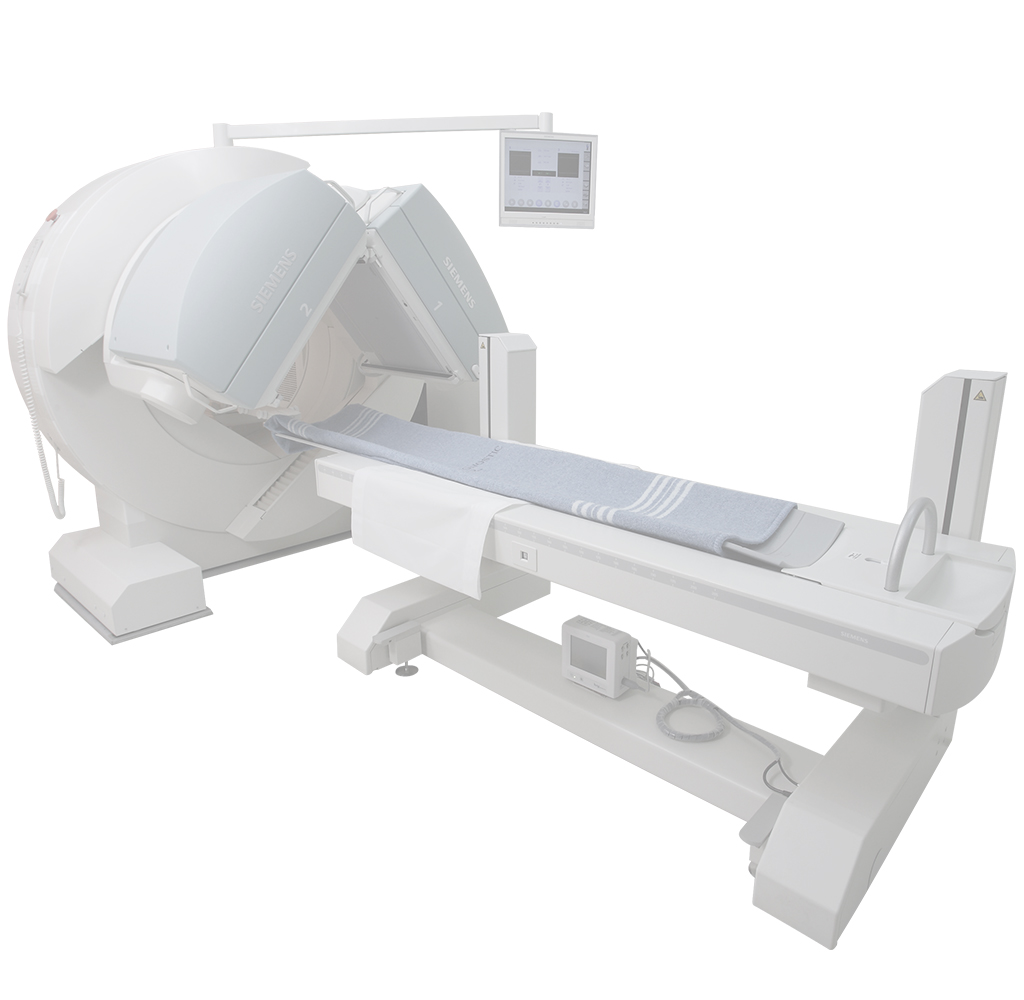
Nuclear Imaging
Nuclear imaging is a medical imaging technique that constructs images by detecting radiation from the body using a gamma camera. Nuclear medicine procedures use small and safe amounts of radioactive materials called radiopharmaceuticals or tracers that attach to specific organs, bones or tissues. These tracers are then detected by the gamma camera. This process is sometimes described as an inside out x-ray because the scanner records radiation from the patient’s body instead of directing radiation to it.
Nuclear medicine is also different from CT Scans or X-rays in that it allows physicians to see how an organ is functioning, whereas the latter two provide physicians a view of anatomical structure. As such nuclear medicine imaging enables physicians to monitor cancer and study the activity of organs such as the liver, head, kidneys and thyroid.
Technology Used
iScan uses a Single Photon Emission Computed Tomography (SPECT) dual detector gamma camera. The dual detectors enable shorter examination times to improve the patient’s ease and comfort.

-
Faster Scan Times
Efficient imaging system workflows enable us to capture diagnostic information quickly and accurately.
-
HD Detectors
Highly sensitive dectors enables high-definition SPECT images.
Before the Examination
- Prior to the exam, the patient will be injected with an examination specific radiopharmaceutical or tracer that attaches to specific organs or tissues.
- The radiopharmaceuticals have a fixed expiration; as such patients should arrive on time. If the patient is not able to arrive on time, the examination may have to be rescheduled. Cancellations of procedure should be done a day before the scheduled examination date.
During the Examination
- The tracer may take time to reach the targeted organ, as such there may be a wait period of 2-3 hours or more, depending on the type of examination requested.
- The actual scan itself takes around 30 minutes but may take longer depending on the type of examination.
- After the examination, the tracer administered will normally be eliminated naturally from the patient’s body in 24 hours.
Results are available after 2-3 business day.
Preparation for a nuclear medicine examination will vary depending on the type of the procedure.
Please contact our center for specific instructions. For women, as a radiopharmaceutical will be injected into your body, please notify the technologist if you are pregnant or there is a chance you may be, or if you are nursing.
- Bone scintigraphy and 3-phase bone scintigraphy
- Thyroid scintigraphy
- Whole body scintigraphy
- Lung perfusion/ventilation scans
- Liver / spleen scintigraphy
- Parathyroid scintigraphy
- Renal scintigraphy with invitro GFR

